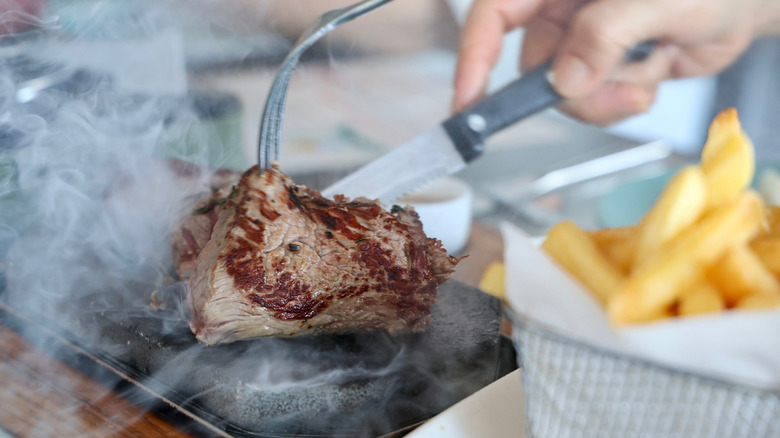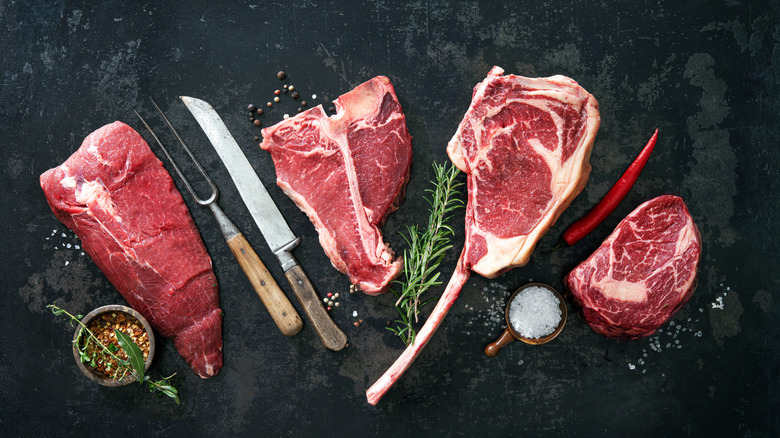Is A Steak Stone Worth The Money?
We may receive a commission on purchases made from links.
Steak stones are stylish. After all, it's pretty dramatic when a nice cut of beef hits the superheated surface and you hear that satisfying sizzle. But are these cooking implements made from lava, soapstone, granite, or other types of rock worth it? They're not cheap and require being heated in the oven or on the grill until scorching (a drop of water should evaporate immediately) before you can use them. Still, aficionados of the cooking method claim it produces an evenly cooked steak with a nice crust without oil and prevents overcooking.
We tapped Jonathan Bautista, the executive chef at Ember & Rye, to give us the lowdown on steak stones. The steakhouse at the Park Hyatt Aviara golf course in Carlsbad, California, is a Chef Richard Blais concept focused on steak and seafood dishes made with local ingredients. Bautista feels steak stones are more about looks and believes in sticking to standard cooking methods, like using a cast iron pan when it comes to steak. "Using a steak stone is cool for presentation, but a classic cast iron pan or grill is always the best method for a perfect result," he told Chowhound exclusively.
When using a steak stone, choose your steak cuts carefully
As mentioned, steak stones can be a bit pricey. A large one from a decent brand, like Black Rock Grill's Big Sizzle Steak Platter, can run you more than $100, and if you're getting smaller ones meant for each guest, like Artestia's Cooking Stones for Steak, you'll be shelling out around $60 each. If you're set on using one for your steak, choosing the cut of beef is key, but price comes into play here, too. Thicker cuts of beef typically work best for this technique since they can handle the high heat without getting overcooked. Popular cuts for the method include tomahawk, ribeye, and filet mignon, all cuts we recommend buying.
Chef Jonathan Bautista tells Chowhound that if he were cooking with a steak stone, he'd opt for Japanese Wagyu, the gorgeously marbled, super tender, high-end beef. "If I were to use a steak stone, I would do it table side for a nice, thin sliced Japanese wagyu that would cook very quickly so as not to sacrifice the integrity of the steak," he said. So, if you like your steak with a side of dramatic flair, a steak stone may be for you, but be prepared to pay for the privilege.

